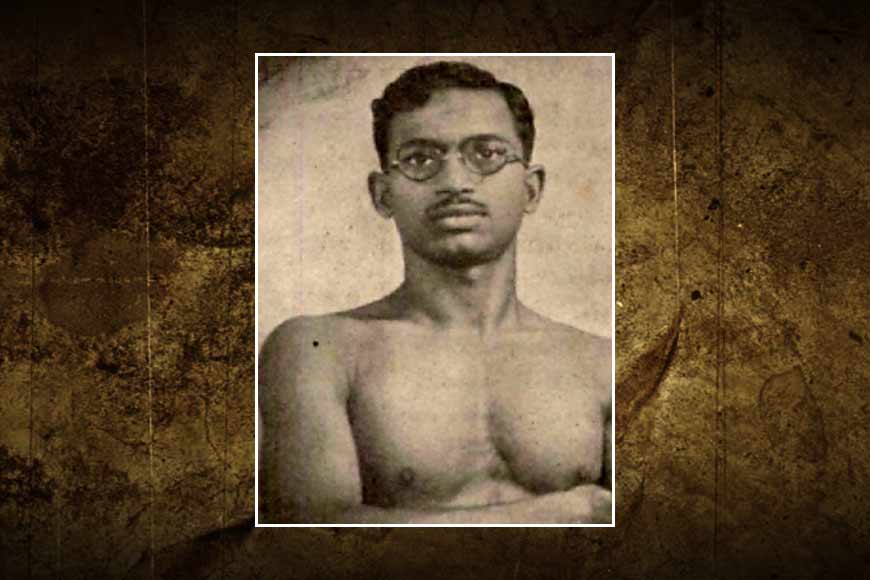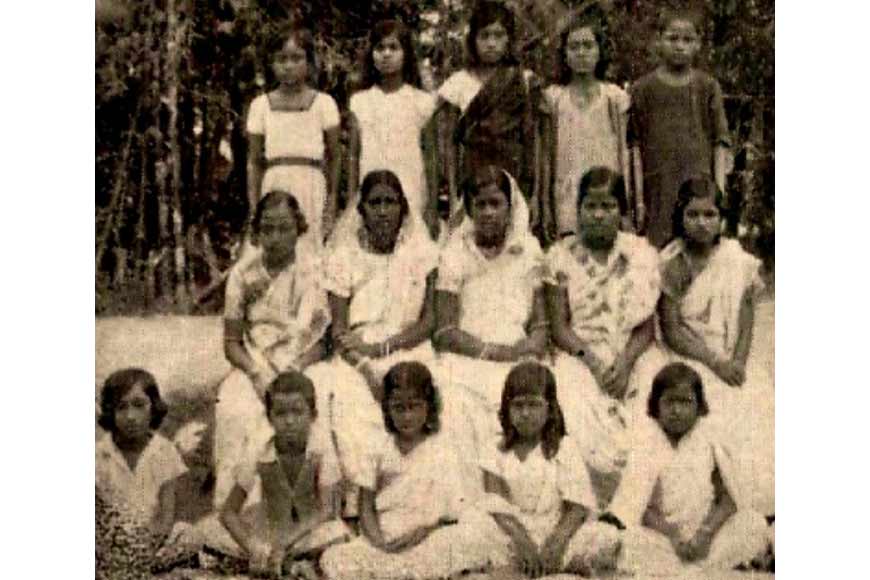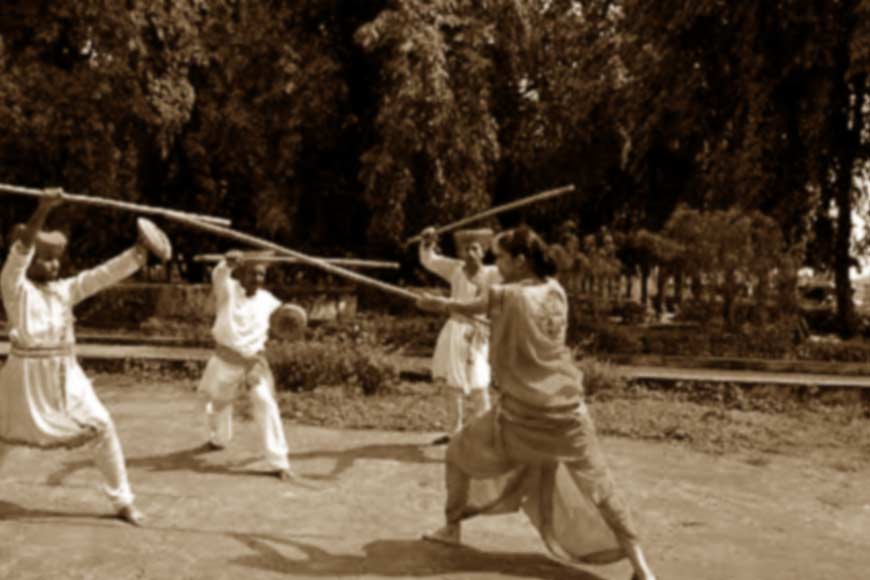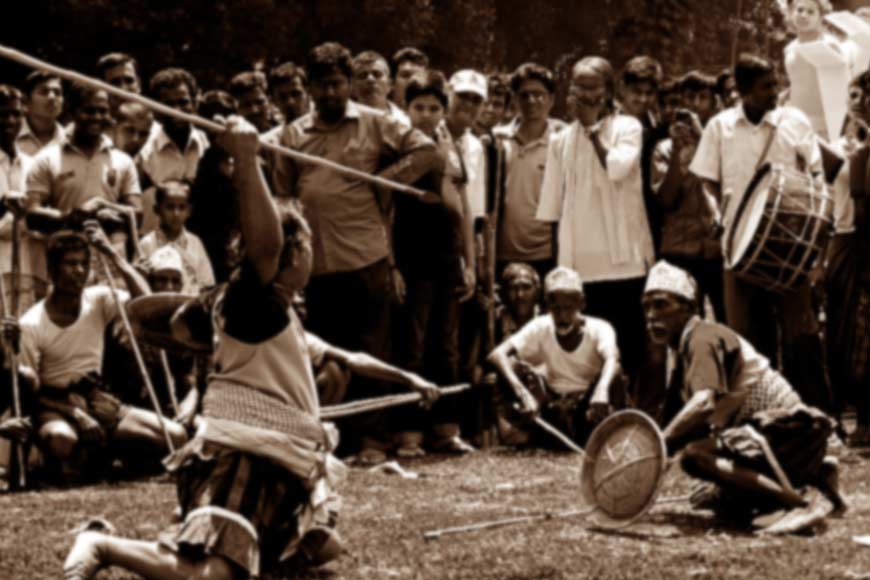Amulya Ghosh gave wings to women and broke the glass ceiling a century ago

Some held sticks in their hands as they prepared for a mock duel, some were practicing fencing, and some were riding their bicycles circling the playground. They were all young girls, mostly teenagers, around 15 years old or maybe, a little older. And a youth in his 30s was training the girls. Sticks and swords as weapons of defense have long ceased to exist. However, in different pockets of the city or suburbs, it is a familiar sight to come across enthusiastic teenage girls and young women training in karate or other martial arts. The popularity of the neighbourhood gymnasiums has resulted in mushrooming of these institutes at every nook and corner of the city where women turn out in hordes for physical fitness training sessions. But a hundred years ago, it was next to impossible to think or nurture a dream-like women’s physical training in the heart of Kolkata. But the impossible task was made feasible by a young man, Amulya Kumar Ghosh, who single-handedly took the initiative to impart physical fitness lessons to women.
This was the beginning of the 20th century when Barindra Kumar Ghosh, Jatindranath Banerji, and Pramathanath Mitra established Anushilan Samiti in 1902. At the outset, this was a fitness club for Bengali youths but was actually used as an underground society for anti-British revolutionaries. In the first quarter of the 20th century, it supported revolutionary violence as the means for ending British rule in India. The organization arose from a conglomeration of local youth groups and gyms (akhara). Inspired by Anushilan Samiti, other gymnasiums also started operations in Calcutta, Dhaka, and other towns, and leagues like 'Nikhil Bangiya Shorircharcha Samity’ (All Bengal Bodybuilding Association) gained immense popularity within a short span. Many physical fitness training schools like ‘Yuva Sangha’ mushroomed in and around the city. However, only men had access to these gymnasiums. The need to organize similar facilities for women was acutely felt by the leaders of society.

Prominent personalities of the time like Captain Jitendranath Bandopadhyay, Dr. Hemcandra Roy, Pulinbehari Das, and Rajendranarayan Guhathakurata emphasized the need to empower women and bring them into the forefront of society because, without their direct involvement in mainstream social and political matters, the future of the Bengali race would be at stake, they insisted. This shift in the Bengali elite image of women’s public role was a game-changer. The ‘games ethics’ influenced the women and it was placed in the broader perspective of their emancipation. Dr. Hemchandra estimated an amount of approximately Rs one lakh to build the required infrastructure for the women’s gymnasium. His views were widely published in newspapers and journals of the time and there was an uproar. Readers scoffed at the very idea of imparting physical fitness training to women and spending so much money on building infrastructure for the purpose. People ridiculed the concept. According to a report published in the monthly magazine ‘Bangalakshmi’, “People are so agitated by the proposal that they are ready to take up arms against men like Hemchandra who have the ‘audacity’ to propose something as blasphemous as this!”
At a time when society was at the crossroads and divided over granting rights to women to participate in physical exercise, Amulya Kumar Ghosh formed two organizations with the young women of Kolkata – 'Chhatra Sangha' and 'Balika Byayam-Samity'. Bereft of any equipment, he began training his pupils with sticks, swords, and knives – all brought from his private collection. He also taught them different Yoga asanas (postures) and jujutsu (Japanese martial art form and method of fighting involving techniques of hitting, kicking, kneeing, throwing, choking, immobilizing holds, and use of certain weapons to subdue an opponent). A few girls from affluent families had bicycles and when they joined his training camp, he would train other girls to ride on those few bicycles by turn. He taught his pupils in the open ground.
But who was Amulya Kumar and how did he get involved with the athletics and bodybuilding scenario of Calcutta? According to a report published in ‘Dainik Basumati,’ (a daily newspaper) on 17 Shravan, 1342 (according to the Bengali calendar), Amulya was born in May 1910. He was very keen to learn fencing and with his intense desire to master the art, he landed in Calcutta from Faridpur (now in Bangladesh) in 1927.
Amulya was inspired by Pulin Bihari Das's book, 'Lathi Khela O Ashi Shiksha' at a very young age and decided to master the art. He was so enthused that he started self-training at home with sticks and knives. As he progressed the urge to delve deep into the world of martial arts intensified and finally, he left his town and headed to Calcutta to learn from the master himself. He landed in the city and met Pulin Bihari, the man of his dreams and his idol, in person. Pulin Bihari was very impressed by Amulya’s expertise in fencing and his deft movements with the stick and took him under his wings as his protégé.

Amulya Kumar had found his goal and worked hard to achieve success in the sphere. In no time, he emerged as one of the most-deft players who was lightning-fast and perfect in his movements while displaying his skills in traditional martial arts with weapons like sticks, knives, and swords. He earned celebrity status in the professional circuit, participating in all the major competitions organized in Calcutta as well as different parts of the country including Bankura, North Bengal, Assam, and other regions, and winning all the titles hands down. He was also a champion javelin thrower and a Jujutsu master who travelled across India, displaying his adroitness. Reports of him challenging British professional players at these events and defeating them were given wide coverage by 'Bangalakshmi' magazine. All this success and adulation also brought to the fore the issue of gender discrimination in the field of sports and Amulya Kumar was deeply concerned and decided to address this issue.
This was the beginning g of his new venture. With the blessings of his Guru, Pulin Behari, Amulya Kumar’s journey to achieve his goal became plain sailing. Initially, girls of influential, noble families joined his training camp, and then middle-class, upper-caste Hindu girls and women joined. Amulya Kumar was a visionary who not only wanted to inculcate physical training as an integral part of a woman’s daily life but also wanted to instill self-confidence in them and prepare them to become brave and self-reliant so that they could be an essential component of the society, take decisions on their own and be at par with males in every aspect of life. He wanted women to voice their problems and demand equal rights. He was successful to a great extent in his mission.
It was November 1934. Amulya Kumar decided to go on a 74-kilometer-long bicycle expedition with his students. His destination was Mogra from Calcutta via Barrackpore and Bali. His announcement shocked the genteel society. His detractors taunted him and many parents forbade their girls from joining in the adventure trip. But Amulya was determined to complete the trek. Finally, only three of his pupils turned up on the day of the event. All three of them, Usharani, Asharani, and Belarani, were the daughters of a well-known scholar and professor at the University of Calcutta, Rajendra Narayan Guha Thakurta. These siblings were all trained by Amulya Kumar at his 'Chhatra Sangha' academy. They were not only deft cyclists but excelled in other sporting events and regularly won medals at competitions held in different parts of Bengal. All three of them were experts in lathi khela (mock duel with sticks), fencing, and Jujutsu. Similarly, Abha Dey, Geeta Pal, and Bijli Mitra were all Amulya Kumar’s students who excelled in martial arts. Later, many of his students actively participated in the country’s freedom movement.

All said and done, there is no denying the fact that Amulya Kumar Ghosh was one of the early social reformers who worked ceaselessly to sansitize society to the latent female power that could actually bring about a transformation in society. Prior to him, society never acknowledged their utility as anything more than homemakers. Amulya Kumar introduced physical training among women as a tool to awaken them from their mediocre existence and take up the cudgels and demand for an equal place under the sun.
It is truly a pity that we have obliterated a visionary from our collective consciousness, a man who worked hard to sansitize society to the needs of women and emancipate females to overcome their fears and come out in the open, work in tandem with their male counterparts, speak up against gender and other discriminations and demand for their rights. He trained girls to become independent, grounded, rational, and self-sufficient and many of his pupils did make a mark in the annals of history. But alas! They too, have been drowned in oblivion.











